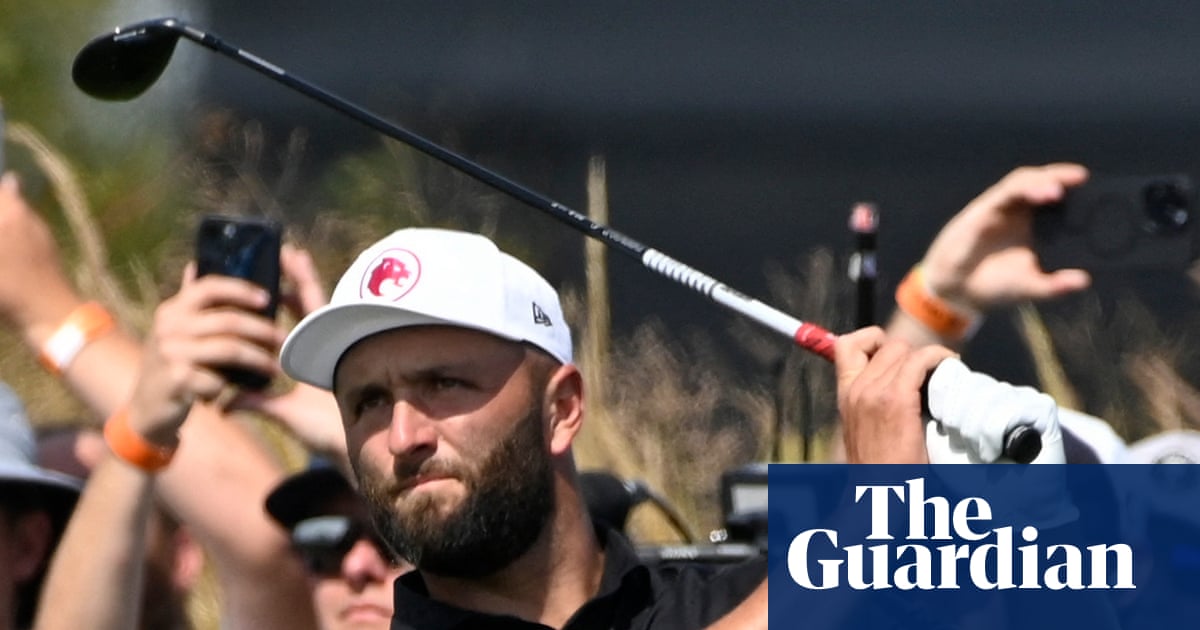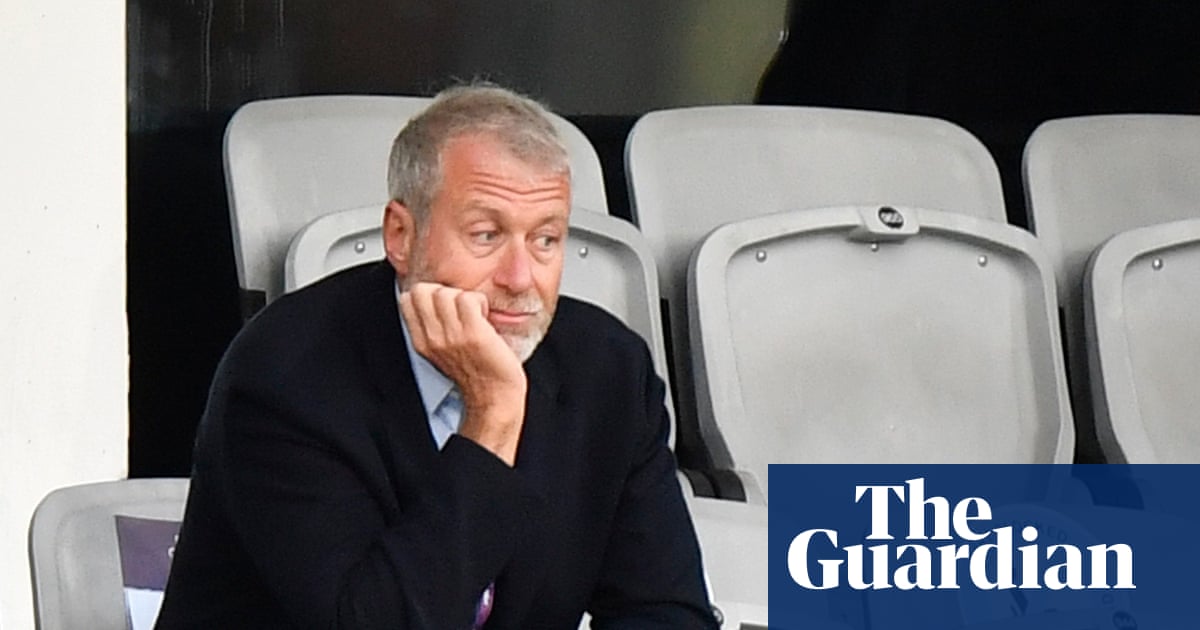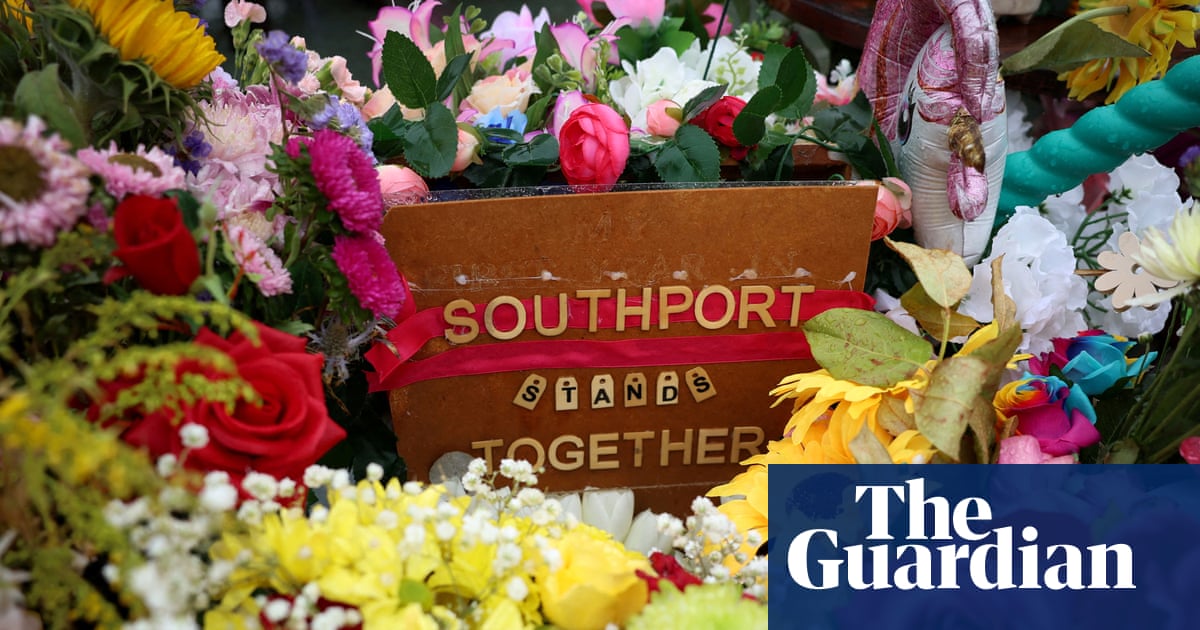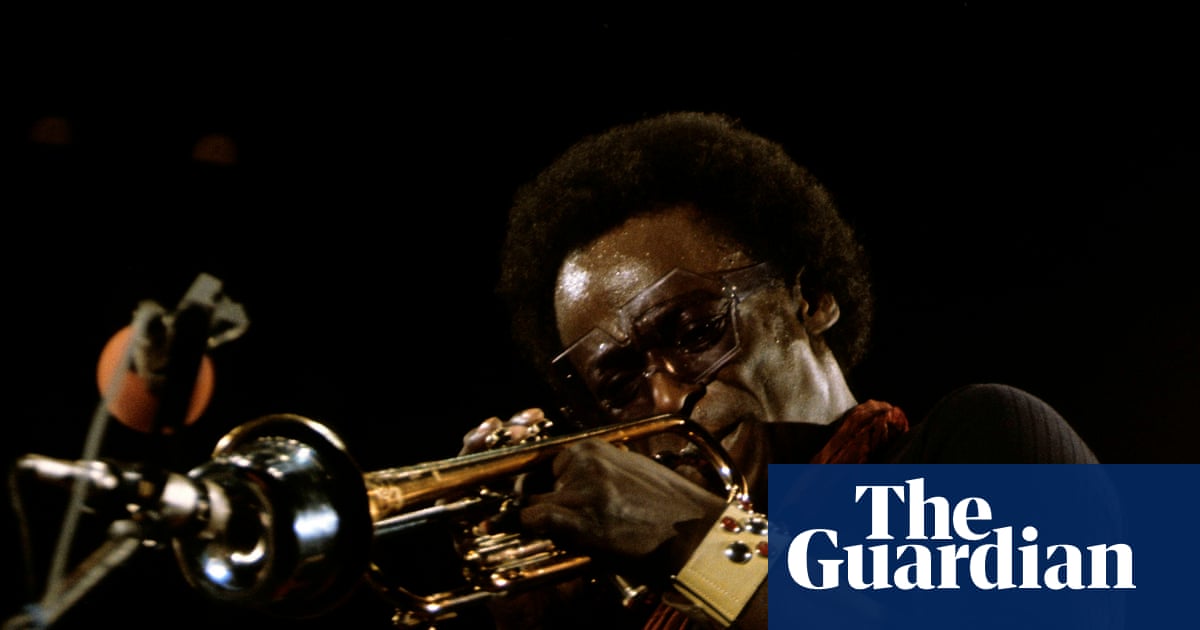I noticed something while testing umbrellas over pavement and muddy hilltop: people are more likely to smile at you. Or perhaps I was more likely to smile at them, while feeling content and dry-headed under the canopy.
We Britons have loved brollies – previously an aristocratic luxury – since about the turn of the 19th century. Today, they’re a broad tent covering tight budgets and expensive tastes alike. You’ll see them sprout like mushrooms whenever rain hits the high street.
Most decent umbrellas will succeed in keeping you dry(-ish), but there are differences to be found when you peer under the canopy. Some have a stronger and smoother mechanism of ribs, stretchers, runner and frame; others are lighter and nicer to hold; and certain models reveal exceptional craft in details such as a smooth wooden handle or a shiny tip.
Of course, many of us care about the appearance of our umbrellas, too. Excellent finishing is an aesthetic consideration, as well as a clue as to the brolly’s longevity.
At a glance
-
Best umbrella overall:
London Undercover Classic
-
Best budget umbrella:
Doppler Zero 99
-
Best folding umbrella:
Blunt Metro Umbrella
-
Best-looking umbrella:
Oswin Hyde Joseph
-
Best mini umbrella:
Davek Mini
-
Best golf umbrella:
Fulton Titan 1
Why you should trust me
As a regular umbrella carrier, I use these contraptions to stay dry on my soggy travels around the north of England. The best ones keep the rain off and are convenient to carry, whether in hand or inside a bag. I’m also selective about colourways, materials, design and construction.
If I’m under a brolly, there’s a good chance I’m either on my way to field-test a product or nipping to the library where I do much of my writing. I’ve extensive experience reviewing useful things, from travel pillows to reusable cups, for titles including the Filter. For the past decade or so, I’ve devoted much of my time to working out what differentiates one product from the next, and what really matters to the user.
How I tested
Throughout October 2025, I carried each umbrella and used it in daily life, noting how effectively it sheltered me from rain and wind. I considered how convenient each model was to use and carry. Did it cover my head, shoulders and torso adequately? Was it comfortable to hold? And would a sudden gust of wind turn its canopy inside out?
For a sterner test of resilience and wind resistance, I opened the umbrellas in strong winds (and clung on for dear life) near the summit of Mam Tor, a highly exposed, 517-metre hill in the Peak District, which overlooks part of the newly minted Steel Cotton Rail Trail. At an altitude greater than the height of any building in Europe, this seemed like an adequate testing ground to see how the brollies would handle a stiff breeze. (Thanks to photographer Christian Hopewell for capturing the fun, and to Alice Ostapjuk-Wise for helping it run smoothly.)
Of course, not all umbrellas are designed for use in extreme conditions. Each of the reviews below reflects the umbrella’s performance against the manufacturer’s claims, as well as how it fared during hilltop testing.
I assessed 15 umbrellas in total, and have featured the best selection here. After testing, I took the wind-buffeted brollies to my local Mind charity shop.
The best umbrellas in 2025
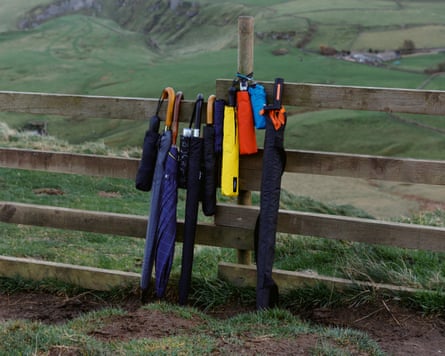
Best umbrella overall:
London Undercover Classic

The London Undercover Classic emerged as the top performer in both day-to-day use and hilltop testing.
Why we love it
It’s a beautifully finished item with exceptional components, right down to the frilly, orange rosette on the runner. Each design has a pleasant colour contrast on the underside to add some cheer to your under-brolly microclimate, which proved impressively dry in this umbrella’s case. I found the slim, elegant maple hook handle very comfortable to hold, with just the right hint of tangible grain to add grip to its smoothness.
The canopy is made entirely from recycled polyethylene terephthalate fabric. It comprises two layers of material – a dual-layer design– and this is key to the Classic’s exceptional wind resistance. During my hilltop testing, it withstood very strong gusts without inverting, and even when I held it high into the air, it only inverted slightly at one side.
As the canopy is fairly deep, there’s very good coverage of the head and shoulders. For taller users, a wider model might be better for the torso and legs.
It’s a shame that … at £115, this umbrella is a serious investment, although I would argue that you’re getting outstanding quality in return. Still, most of the other brollies featured here cost far less.
Weight: 500g
Length (folded): 91.5cm
Canopy diameter: 105cm
Warranty: one year (and exceptional cases considered over a longer period)
Best budget umbrella:
Doppler Zero 99

Are you the sort of person who sometimes ends up buying an ultra-cheap brolly from a cut-price shop on unexpectedly rainy days? I suspect many of us are.
Why we love it
This fairly priced, pocket-sized brolly from Doppler is a better, eco-friendlier solution for those who want convenient access to a brolly, without ladening themselves down. The weight and size are negligible, so you can pop it inside your bag for permanent storage and pluck it out with satisfaction whenever rain starts to fall. When I used it on the sodden streets of Leeds, it proved a helpful companion during moderate showers, although the small-ish canopy diameter meant my legs received a dousing.
Its features are cleverly designed to minimise the heft, especially the small, circular grip at the bottom of the pole, which is just as clutchable as a knob but a fraction of the size. For the price you’re paying, the design is outstanding.
It’s a shame that…this lightweight umbrella is highly prone to inverting in the wind, and coverage is relatively limited. It could keep your head and shoulders dry in a shower, but as I discovered on the windy peak of Mam Tor, it’s not suitable for challenging weather.
Weight: 99g
Length (folded): 21cm
Canopy diameter: 90cm
Warranty: three years
Best folding umbrella:
Blunt Metro Umbrella
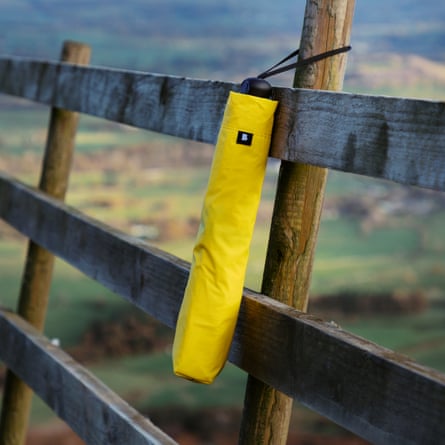
The Blunt Metro is a statement piece that will bring sunshine to a rainy day – especially if you’ve chosen the citrus yellow colour I received for testing.
Why we love it
It feels very sturdy and durable, and the sweetly shaped canopy proved broad enough to keep my head and shoulders dry. The automatic opening action is very smooth, although I did find that the button was easy to press accidentally, as it’s incorporated so deftly into the handle.
Victorian Londoners were crying out for this brolly: an initial brake on their uptake of umbrellas was the risk of collisions on crowded streets – so argued William Sangster in his book of 1855, Umbrellas and Their History. The Metro has a unique and brilliant solution for this continuing problem: it can spin freely through 360 degrees when open, so it rolls breezily away when knocked.
Like every other folding umbrella I tested, the Metro soon inverted once held open to strong wind on the hilltop, but it popped back into shape easily enough. It stood up well against sudden gusts in day-to-day use, with no inverting where other small brollies failed.
It’s a shame that … this umbrella has the odd trait of sending a shower of droplets back towards you when you try to shake it dry. You’re better off letting it drip.
Weight: 385g
Length (folded): 37.5cm
Canopy diameter: 100cm
Warranty: two years
Best-looking umbrella:
Oswin Hyde Joseph

This Oswin Hyde umbrella is remarkable for its currently reduced price of £49 (RRP: £75). It looks beautiful, with a many-ribbed, rounded shape that’s reminiscent of traditional Indian state umbrellas (called chatra). Most of the components feel of good quality (although they’re not at the premium end of the market), and the brolly rolls up prettily for carrying or storage inside its protective sleeve.
Why we love it
I found this a very pleasant umbrella to shelter under, with broad coverage and pleasing acoustics that made my voice sound uncharacteristically interesting while recording notes, mid-review. It’s broad enough to prevent vertical or near-vertical rain from hitting most parts of the body, although I’d recommend something with a deeper canopy for sideways rain. It’s wide enough for two people to shelter under, and the attractive shape and detailing might make it a romantic choice for shared use.
While this umbrella did invert in the wind, without needing as much blustery coercion as some of its competitors, I was impressed with how it bounced back from these episodes. It’s clear that the ribs are highly flexible, which should help them to resist damage.
It’s a shame that … this isn’t quite as robust as some of the higher-end brollies we’ve reviewed. I found that the tip can be dented easily.
Weight: 658g
Length (folded): 92cm
Canopy diameter: 112cm
Warranty: six months
Best mini umbrella:
Davek Mini

A charming little helper that lives happily in a handbag or rucksack, the Davek Mini is the finest miniature umbrella I’ve ever unfurled. I enjoyed admiring its elaborate frame (fibreglass reinforced for wind resistance) from beneath its brightly hued canopy. In ferocious winds at the summit of Mam Tor, it held up for longer than other folding models before turning inside out. However, I wouldn’t recommend it for use in blustery weather.
Why we love it
This brolly feels incredibly light, and if you study the fine details, you’ll appreciate how it came to be so. For instance, the handle is tiny and hollow, but it’s surprisingly comfortable and nicer to grasp than many of its more bulbous rivals. I’d suggest using the slightly elasticated wrist strap at the same time, since this allows a more casual grip without fear of dropping.
The canopy is broader than you might expect, with a diameter that rivals some mid-size umbrellas. It kept my head dry during rain showers, although the same can’t be said for my gangly legs.
It’s a shame that … it costs £60, which is steep for a mini umbrella. However, factoring in the lifetime guarantee, this could be a prudent choice in the long term.
Weight: 225g
Length (folded): 17cm
Canopy diameter: 86cm
Warranty: unconditional lifetime guarantee
after newsletter promotion
Best golf umbrella:
Fulton Titan 1

I’ll admit that golf umbrellas aren’t my favourite breed of brolly, but this model from Fulton won me over. The windproof, vented canopy proved highly effective at resisting inversion in strong winds, even when gusts were so powerful that I started to lose my footing.
Why we love it
Fulton describes this canopy as “supersize”, and at 136cm in diameter, it’s certainly the largest I’ve tested. There’s ample coverage for two people to shelter without catching the runoff from the umbrella’s sides. Its fabric, with the concave dips between the rib tips, nicely frames your view of the world.
The Titan 1’s construction is impressive, too, especially considering the affordable pricing. Its lightweight, fibreglass frame has remarkable flexibility and gives the brolly a bouncy feel in hand.
Rather than a sleeve, the Titan comes in a carry case with a shoulder strap, allowing for easier, hands-free transportation.
It’s a shame that … this umbrella can sometimes make your forearms ache. Holding it by the straight grip (which is undoubtedly comfy), I found it easy to rest back on my shoulder, but quite strenuous to hold forwards into the wind.
Weight: 950g
Length (folded): 98cm
Canopy diameter: 136cm
Warranty: all manufacturing faults considered
The best of the rest
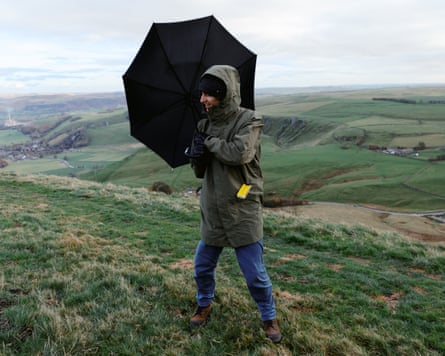
Fulton Minilite 2

Best for: a pocket umbrella
Fulton makes this Minilite 2 style with various printed canopies, including retro stripes, art prints and the glitter bow version shown.
It’s a cheerful, affordable option, and I enjoyed seeing the shimmering pattern through the material as I walked under streetlights on a rainy night.
It was prone to inverting in the breeze, although the aluminium frame proved wind resistant, as promised, with no signs of damage after a sojourn in powerful winds. The folded size is suitable for handbags and backpacks.
It didn’t make the final cut because … it feels quite rickety compared with the other options featured here.
Weight: 236g; length (folded): 25cm; canopy diameter: 96cm; warranty: all manufacturing faults considered
Paul Smith compact umbrella

Best for: a designer umbrella
Would you like an umbrella with ample coverage and a classic aesthetic, or one that fits inside a rucksack? Where most brands make you choose, this one from Paul Smith covers all the bases. Its canopy is wide and deep, and the telescopic pole allows it to fold down to a manageable size.
My favourite touch here is the wooden crook handle – a rarity in folding umbrellas. There’s just the right degree of irregularity to the finishing around its edges.
It didn’t make the final cut because … although it’s mid-size, this umbrella fared little better than smaller folding models when used in strong winds. It inverted quickly during my stress test in the Peak District.
Weight:433g
Length (folded): 47cm
Canopy diameter: 100cm
Warranty: two years
Knirps T200 Duomatic
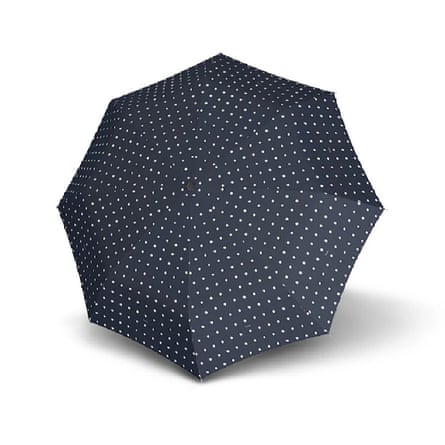
Best for: automatic opening and closing
I was impressed with this smart-looking, meticulously engineered folding umbrella from Knirps. While not quite as small as some mini or pocket folding umbrellas, it will fit comfortably inside a good-size backpack or handbag. The automatic open-close mechanism is supremely smooth, and the bright, red button that activates it positively begs to be pressed.
It has a dual-rib assembly that gives it strength when inverted by the wind, as well as when held head-on, and apparently this has been tested in a wind tunnel at up to 150km an hour.
It didn’t make the final cut because … while the frame could indeed withstand a battering from the wind, the T200 was just as quick to invert as other lightweight models. So, while it might not sustain damage in windy weather, it’s perhaps not the best brolly to use in these conditions.
Weight: 320g; length (folded): 28cm; canopy diameter: 98cm; warranty: five years
Lifeventure Medium Trek

Best for: UV protection
Before umbrellas were used to keep off rain, parasols shielded people from the sun. A growing trend among trekkers and mountaineers has seen small, lightweight umbrellas added to packing lists for both purposes, making brollies just as relevant on the mission to base camp as they are on the walk to work.
This Lifeventure model is a good example of the type, with automatic open-close, a grippy pleather handle and – here’s the important part – UPF50+ sun protection. I thought it felt strong and light, and the opening mechanism is excellent.
It didn’t make the final cut because … the Trek’s wind resistance is modest (although not bad for a folding model), so it’s best suited to sun or rain protection on still days.
Weight: 380g; length (folded): 32cm; canopy diameter: 97cm; warranty: three years
Davek Elite

Best for: a formal occasion
This sleek city umbrella (or “cane umbrella”) from luxury brand Davek is a perfect match for smart outerwear or suiting. In this black colourway, it has a slightly “goth winter” feel to it, with a stitched leather handle and elongated rib tips.
During our high-winds testing, the Elite resisted inversion impressively, and it soon returned to the desired shape once turned back to face the wind. The fibreglass frame proved highly flexible and resilient to stress.
It didn’t make the final cut because … personally, I preferred other umbrellas in a similar price range. That’s not to say this isn’t a great brolly, though.
Weight: 708g; length (folded): 89cm; canopy diameter: 112cm; warranty: unconditional lifetime guarantee
What you need to know
Features to look out for
Automatic opening (and sometimes closure) is a nice-to-have feature that makes using an umbrella that little bit easier. It’s common in golf umbrellas and even more so in folding umbrellas, which employ a telescopic pole (or shaft) for compact portability.
Stormproof or windproof umbrellas have vents or dual layers of fabric to allow gusts through. Models with these features clearly proved to be the best at resisting inversion (or dragging me towards a cliff edge) during my testing in high winds. Another feature widely used in windproof models is a double ribbed frame, which tends to make the umbrella more resilient to the push and pull of high winds.
What types of umbrellas are there?
City umbrellas are the traditional choice in the UK, with a long, solid pole and a wide canopy. Most have a curved handle called a “hook” or “crook” – interchangeable terms in umbrella anatomy.
Sportier and often with brighter-coloured canopies, golf umbrellas are another large, non-folding option. For some reason (perhaps in an aggressive move towards caddies), many have straight grip handles.
Folding umbrellas – also known as portable umbrellas or even pocket umbrellas – have been around since the Victorian period. The best modern examples are made with super-lightweight materials and can endure blustery conditions without breaking. Thanks to their telescopic shafts, they’re easy to slip into a rucksack or handbag, so you can keep one handy for unexpected showers.
What’s the difference between an umbrella and a parasol?
In the UK, it has been largely unfashionable to use handheld umbrellas for sun protection since Victorian times. This is a shame, since blocking potentially harmful rays is one of an umbrella’s strengths.
An umbrella especially for sun protection is called a parasol. These far predate modern (rain-focused) umbrellas, as evidenced by records from ancient Egypt and Assyria, to name a few early parasol hotspots.
The two types, or uses, of an umbrella-shaped item are now practically inseparable in terms of silhouette and construction. However, some umbrellas are better for sun protection than others. If keeping off the sun is one of your top priorities, it’s generally best to choose an umbrella that has a wide, deep canopy – and better still, UV-protective material, as used in the Lifeventure model reviewed above.
For more, read the best waterproof jackets for men and the best waterproof jackets for women
Pete Wise is a journalist from Leeds. Over the past decade or so, he’s reviewed hundreds of products for titles including the Filter and written about many other topics, from aquifers to tutu-making. Pete thoroughly enjoyed reading Marion Rankine’s book Brolliology as research for this article. His favourite umbrella is a Betty’s Tearooms-branded one that once belonged to his mother. Beneath its canopy is the place where they can still have a chat

 4 hours ago
8
4 hours ago
8





